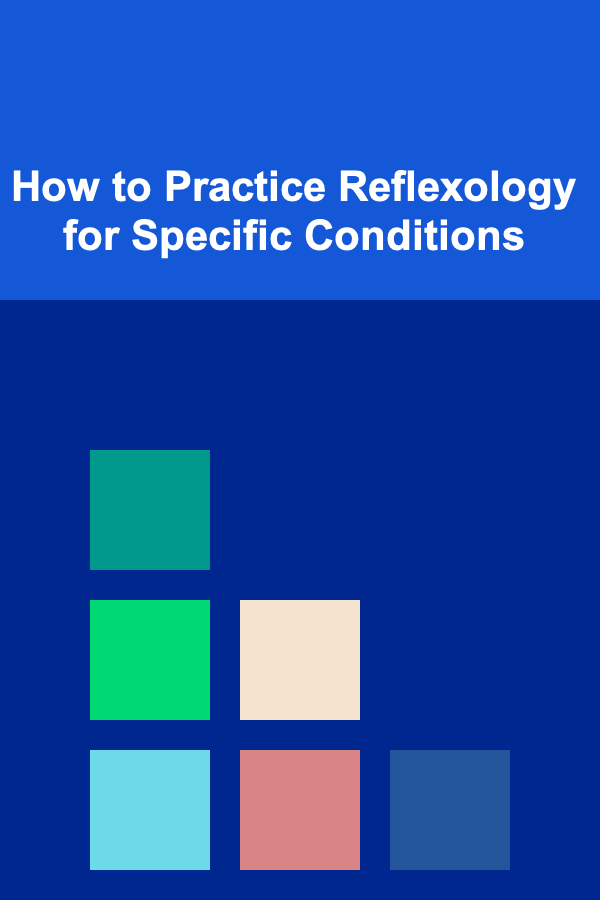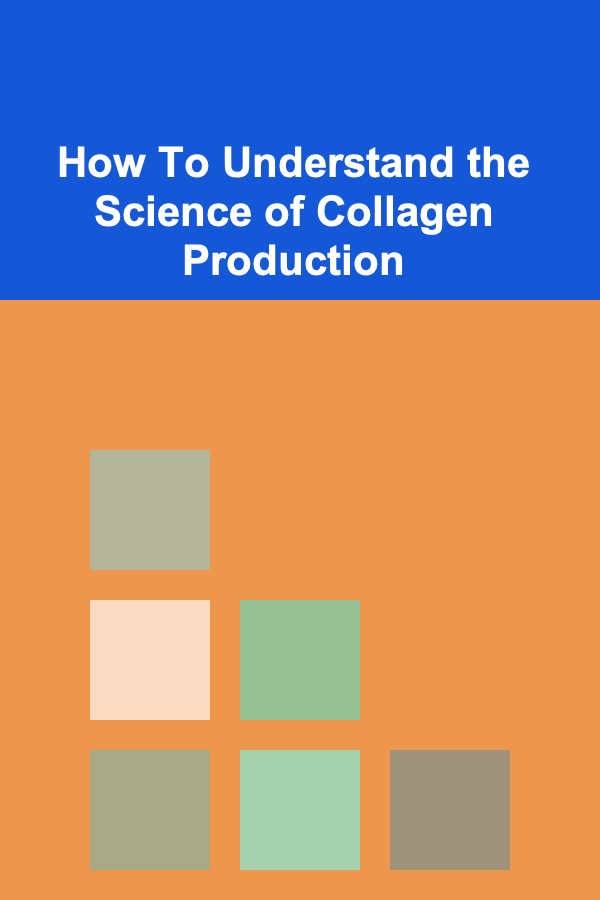
How to Practice Reflexology for Specific Conditions
ebook include PDF & Audio bundle (Micro Guide)
$12.99$11.99
Limited Time Offer! Order within the next:

Reflexology is an ancient practice that focuses on applying pressure to specific points on the feet, hands, and ears to promote health and healing throughout the body. This holistic treatment is rooted in the idea that these reflex points correspond to various organs and systems in the body. By stimulating these points, reflexologists believe they can improve circulation, relieve tension, and balance energy within the body, leading to overall better health.
This article will delve into the art of reflexology and how to practice it for specific conditions, including stress, headaches, digestive issues, and more. By learning the techniques associated with reflexology, you can begin to practice this healing art at home and apply it effectively to help manage and alleviate various health concerns.
Understanding Reflexology
Before we dive into how to practice reflexology for specific conditions, it's essential to understand the basics of this practice. Reflexology operates on the belief that the feet, hands, and ears are like mirrors of the body. These areas contain reflex points, each corresponding to a specific organ, system, or body part. Stimulating these reflex points can support the body's natural healing processes and promote balance and wellness.
In reflexology, practitioners use different techniques such as thumb and finger pressure, kneading, and rotation to target these reflex points. By manipulating these areas, reflexologists aim to reduce stress, improve circulation, enhance the body's natural healing ability, and restore energy flow.
Reflexology Techniques for Specific Conditions
1. Reflexology for Stress Relief
Stress is one of the most common conditions that people seek reflexology for. Chronic stress can have a significant impact on both mental and physical health, contributing to issues such as anxiety, insomnia, digestive problems, and even high blood pressure. Reflexology can help reduce stress by promoting deep relaxation and supporting the body's natural ability to de-stress.
How to Practice Reflexology for Stress Relief
- Find the Relaxation Reflex Points: The primary reflex points for stress relief are located on the solar plexus, which is found in the center of the foot arch, and the diaphragm reflex, located in the middle of the ball of the foot. These areas correspond to the body's relaxation response.
- Apply Gentle Pressure: Start by gently pressing and massaging the solar plexus and diaphragm reflex points with your thumb or fingers. Apply consistent but gentle pressure, holding it for about 10-15 seconds, then release. Repeat several times.
- Work the Toe Tips: The tips of the toes correspond to the head and neck, areas where stress often manifests. Gently press and rotate each toe to stimulate relaxation in these areas. Use circular motions or gentle pressure to target tension.
- Use the Ears for Deep Relaxation: The ears contain many reflex points that connect to the nervous system and are great for promoting deep relaxation. Massage the earlobes gently using circular motions to release tension.
By practicing reflexology on these points regularly, you can significantly reduce stress levels, promote mental clarity, and enhance your overall sense of well-being.
2. Reflexology for Headaches and Migraines
Headaches and migraines can be debilitating, affecting your ability to focus, work, and engage in daily activities. Reflexology can be an effective way to alleviate these conditions by stimulating reflex points that correspond to the head, neck, and sinuses.
How to Practice Reflexology for Headaches and Migraines
- Target the Head Reflex Point: The reflex points for the head are located at the tips of the toes, particularly the big toe. Using your thumb, apply gentle pressure to the tip of each toe, especially the big toe, and hold for about 10 seconds. This can help relieve tension in the head and promote relaxation.
- Massage the Neck and Shoulders Reflex: The neck reflex is located in the area just below the base of the toes. Apply pressure to this area, and gently work it in small circles. This can help relieve neck tension that may be contributing to headaches.
- Stimulate the Sinus Reflex Points: Sinus issues often contribute to headaches, particularly in people suffering from migraines or tension headaches. The sinus reflex is located on the tops of the feet, just below the ball of the foot. Apply gentle pressure and rotate the area to relieve sinus congestion.
- Relax the Energy Flow: When headaches or migraines are caused by stress or emotional tension, reflexology can help to restore the balance of energy throughout the body. By working the solar plexus reflex point and the diaphragm, you can help promote emotional balance and reduce the frequency and intensity of headaches.
Using reflexology in conjunction with other headache relief methods can help alleviate symptoms and prevent future episodes.
3. Reflexology for Digestive Issues
Digestive problems such as constipation, indigestion, and bloating are common complaints that reflexology can address. Reflexology helps stimulate the digestive system and promotes better bowel movement and digestion. Certain reflex points are known to connect directly to the intestines, stomach, and liver, all of which play a role in digestion.
How to Practice Reflexology for Digestive Issues
- Massage the Stomach Reflex Point: The stomach reflex is located on the ball of the foot, just below the base of the toes. Apply gentle pressure using your thumb or finger, and gently massage in circular motions. This can help promote better digestion and alleviate discomfort caused by indigestion.
- Stimulate the Intestinal Reflex: The intestinal reflex points are located along the arch of the foot, extending from the ball of the foot to the heel. Apply moderate pressure to this area to help stimulate the bowels and encourage movement, which can be particularly helpful for constipation.
- Work the Liver Reflex: The liver is crucial for detoxifying the body and supporting digestion. The reflex point for the liver is located on the right foot, just beneath the ball. Gently massage this area to encourage the liver's natural detoxification processes.
- Focus on the Large Intestine Reflex: The large intestine reflex point is located on the bottom of the foot, along the arch. This reflex is particularly useful for promoting bowel movement and alleviating symptoms of constipation or bloating.
By regularly practicing reflexology on these points, you can support healthy digestion and address digestive issues more effectively.
4. Reflexology for Insomnia and Sleep Issues
Sleep problems such as insomnia can have a significant impact on overall health and well-being. Reflexology can help by stimulating relaxation and promoting the body's natural sleep cycle. Reflexology helps balance the nervous system, reduce stress, and relax the body, making it easier to fall and stay asleep.
How to Practice Reflexology for Sleep Issues
- Relax the Solar Plexus Reflex: As mentioned earlier, the solar plexus reflex point, located in the center of the foot arch, is key for relaxation. Gently press and massage this point for several seconds, allowing the body to release tension and promote a calming effect.
- Target the Head and Brain Reflex Points: Work the tips of the toes to stimulate the reflex points related to the head and brain. This can help reduce mental tension and prepare the mind for rest.
- Stimulate the Pineal Gland Reflex: The pineal gland, responsible for regulating the sleep-wake cycle, has a reflex point located just below the toes. Gently massage this area to encourage healthy sleep patterns.
- Use the Heel Reflex: The heel reflex is connected to the sacral area and lower back. Gently pressing on this area can relieve tension in the lower body and promote relaxation.
Incorporating reflexology into your nighttime routine can help you relax before bed and improve the quality of your sleep.
5. Reflexology for Hormonal Imbalances
Hormonal imbalances can lead to a wide variety of symptoms, including mood swings, fatigue, irregular periods, and even weight gain. Reflexology can help regulate the endocrine system, balancing hormones and supporting the body's natural rhythms.
How to Practice Reflexology for Hormonal Imbalances
- Work the Pituitary Gland Reflex: The pituitary gland plays a central role in hormone regulation. The reflex point for the pituitary gland is located on the thumb, and gentle pressure can help support its function.
- Stimulate the Ovaries Reflex: The ovaries, which play a key role in reproductive health, have reflex points located on the inner sides of the feet, near the arch. Pressing these areas can help promote hormonal balance, especially for women experiencing menstrual or fertility issues.
- Focus on the Thyroid Reflex: The thyroid, which regulates metabolism, has reflex points located on the balls of the feet. Applying gentle pressure to these points can help support thyroid health and balance metabolism.
- Balance the Adrenal Glands: The adrenal glands, which respond to stress and regulate hormones like cortisol, have reflex points located near the heels of the feet. Stimulating these points can help reduce stress levels and support adrenal function.
By practicing reflexology regularly on these reflex points, you can promote hormonal balance and address symptoms of imbalances.
Conclusion
Reflexology is a powerful and holistic therapy that can help address a wide variety of health conditions. By applying pressure to specific reflex points on the feet, hands, and ears, you can promote relaxation, improve circulation, reduce stress, and support the body's natural healing abilities. Whether you're dealing with stress, headaches, digestive issues, sleep problems, or hormonal imbalances, reflexology offers a natural and effective way to improve your well-being. With consistent practice and proper technique, you can harness the healing power of reflexology for a variety of specific conditions and experience greater health and vitality.

10 Cheap and Healthy Snack Options for Busy Lifestyles
Read More
How to Create a Festive and Functional Holiday Kitchen Display
Read More
How to Plan a Cocktail Party at Home with Class and Elegance
Read More
How To Understand the Science of Collagen Production
Read More
Protecting Your Garden from Frost: A Comprehensive Guide
Read More
How to Plan a YouTube Series from Start to Finish
Read MoreOther Products

10 Cheap and Healthy Snack Options for Busy Lifestyles
Read More
How to Create a Festive and Functional Holiday Kitchen Display
Read More
How to Plan a Cocktail Party at Home with Class and Elegance
Read More
How To Understand the Science of Collagen Production
Read More
Protecting Your Garden from Frost: A Comprehensive Guide
Read More